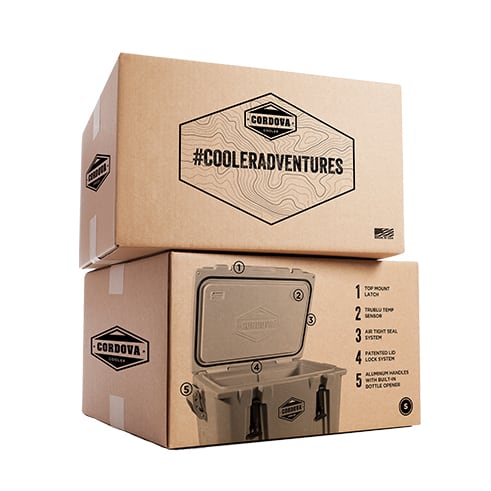Even if you’ve never heard of Connected TV — or CTV for short — you’ve definitely seen it. More importantly, you’ve seen CTV advertising. And even if you’re not an expert on streaming or Connected TV, you can utilize CTV advertising as an effective and cost-effective way to reach your desired audience.
What is CTV Advertising?
Connected TV is any television product that airs on an Internet-based streaming service. This includes streaming-only programming, as well as cable substitutes that are streamed through the Internet. The ads that play during commercial breaks in these shows are considered CTV advertising, also known as over-the-top advertising or OTT advertising. Though the verbiage can vary, there’s no mistaking CTV advertising — the ads that play during streaming shows on ad-supported platforms like Hulu and during streamed sporting events.
What’s particularly notable about CTV advertising is that all Connected TV ads are targeted. In other words, the same ad doesn’t go out to every viewer. Instead, marketers bid on the right to air their advertisements to particular demographics, just as they do for paid search ads and social media ads. This is one reason why you may see the same ad multiple times while watching a streaming program.
In many respects, CTV advertising is actually better than traditional TV advertising. Not only is streaming becoming wildly popular, but it often features fewer ads per commercial break than conventional television. Because a Connected TV ad competes against fewer ads in a commercial break, it may be more memorable — especially since it’s tied directly to a marketer’s desired demographics.
With streaming services being one of the most prominent trends of any kind, it makes sense for advertisers to maintain a presence in this space. After all, marketers must go where their customers reside. If your audience consumes streaming content, CTV advertising is where you need to be. Here’s how you can make the most of advertising on Connected TV.
1. Use Assets You Already Have
What’s the best way to start with CTV advertising? Take the simple approach by taking a look inward and seeing what you’ve already created that might be useful.
You might be surprised to find that you’re already well on your way. Any linear TV advertising creative you have can easily be repurposed for CTV. The same is true of YouTube ads you’ve produced. Both are fair game for CTV advertising. It’s a quick turnaround, and it’s a great way to get started without overanalyzing or delaying, or by spending tons of money producing the perfect video spot.
2. Take Advantage of Measuring Capabilities
We know that digital marketing is preferable to traditional marketing because of the tracking abilities inherent in digital marketing. The same is true for CTV advertising in comparison to traditional television advertising. Even in 2022, TV metrics are largely estimated, with Nielsen ratings still taking center stage rather than counting actual views. Those estimates not only mean potentially paying more in advertising costs due to inaccurate data, but they leave way too many blanks in your data stores.
On the other hand, CTV advertising gives you everything you’re accustomed to seeing in digital marketing reporting. You’ll be able to see how many people viewed your ads, how many people watched the duration of your ads (rather than skipping them or exiting out of the app), the devices used to view your ads, and even actions taken after viewing your ad, if the viewer clicked on a link from your advertisement. These metrics will give you the true measure of how your ad is performing with your desired target audience. Track these figures over time to make sure you’re getting the best possible return out of your CTV advertising spend.
3. Use Advanced Targeting
Using a DSP, or demand-side platform, when buying your Connected TV advertising gives you access to a wealth of targeting options. Specific audience targeting, lookalike audiences, retargeting, and even cross-device marketing are just a few examples of what’s available through DSPs.
What does this mean? If you can quantify your target audience, you can reach it. However, that doesn’t necessarily mean you should target all of the segments available to you. Test everything, but do so carefully, and pay attention to the metrics you receive through your testing. Let those figures be the guide for whom you target with future CTV advertising.
4. Complement Your Other Channels
CTV is a powerful force, but it’s not necessarily a standalone marketing vehicle. Instead, it’s something that’s currently best used in conjunction with an existing marketing strategy. Use Connected TV advertising to assist where the targeting aspects of CTV can be most beneficial.
The sweet spot for CTV advertising varies by business. For example, if you’re already running linear TV ads, you can use those to create awareness of your brand and your business, and then CTV ads can be deployed further down the sales funnel, when you can use targeting to reach specific segments of your audience. On the other hand, you can use CTV ads to create awareness, and then use other digital ads for targeting as people do research about your company. Once again, testing is your best friend — let the numbers guide your approach when creating your own best practices.
5. Extend the Reach of Linear TV
We all know that the popularity of cable TV is waning, with more than 55 million Americans planning to cut the cord by the end of 2022. This doesn’t mean that advertising on linear TV isn’t worthwhile. However, traditional TV advertising does have to be looked at through a new lens.
Typical linear campaigns build reach quickly, but plateau just as fast. As a result, heavy TV viewers end up comprising 80 percent of linear advertising impressions. That leaves the rest of the cable viewing population, not to mention the cord-cutters — and you can reach both of those groups through CTV.
If linear TV advertising gives you reach to one segment of your TV-watching audience, targeted CTV advertising can amplify your message and reach those that wouldn’t see it on regular TV. This lets you hit cable viewers, cord-cutters, and those younger viewers that would never subscribe to cable. Consider CTV advertising a very nice partner of your linear TV marketing efforts.
6. Create Retargeting Audiences for Your Digital Campaigns
We spoke earlier about the power of tracking in digital marketing. But did you know that you can use CTV advertising to essentially identify your audience for your marketing message? Through CTV advertising, you can identify the people who have viewed your ad — in particular, those that have seen it a specific number of times — and then retarget those individuals with display ads and social ads. This gives you a group of consumers that you can track through multiple touchpoints, which lets you truly see how well your advertising is doing.
At the same time, you can use this tracking technology to exclude people who have seen your CTV advertisements. You’d do this if you want to send one message through CTV advertising, and then send a different type of message to these viewers on other platforms. This is not an option you have to take — it’s simply one example of how you can utilize the reach and tracking capabilities of CTV advertising.
The benefits of CTV advertising are numerous, and there are significant implications for tracking, reach, and working alongside your existing marketing platforms. CTV will only grow in importance and in stature, making this an ideal time to embrace this medium. If you’d like to learn more about how to get started, contact us at Commit Agency today.





















